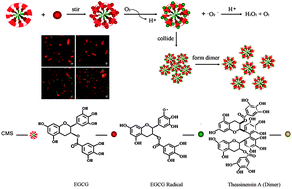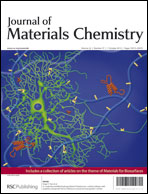Core–shell mesoporous silica nanoparticles improve HeLa cell growth and proliferation inhibition by (−)-epigallocatechin-3-gallate by prolonging the half-life
Abstract
(−)-Epigallocatechin-3-gallate (EGCG) is an effective anticancer drug for a variety of cancer cell lines, but it is unstable with a half-life of 30 minutes to 2 hours under different culture conditions for cell apoptosis; EGCG dimers, hydrogen peroxide (H2O2) and other oxidative products are formed. Herein, we report that a multiple core–shell functionalized colloidal mesoporous silica nanoparticle system (CMS) resulted in the electrostatic attraction of EGCG to the surface and pores, alleviating the interaction of free radicals which produced dimers or other polymers. Based on the results of MTT assay, cell cycle analysis and western blot, the loading of EGCG into the CMS increased the anticancer ability of EGCG compared to that of free EGCG being used to treat HeLa cells in the absence of CMS. In addition, fluorescein isothiocyanate (FITC) was entrapped in the core of CMS, which allowed the CMS to simultaneously denote the position of EGCG in cells. These results demonstrate that it is possible to use the CMS platform as a promoter to improve the anticancer ability of the unstable chemotherapeutic agent.


 Please wait while we load your content...
Please wait while we load your content...